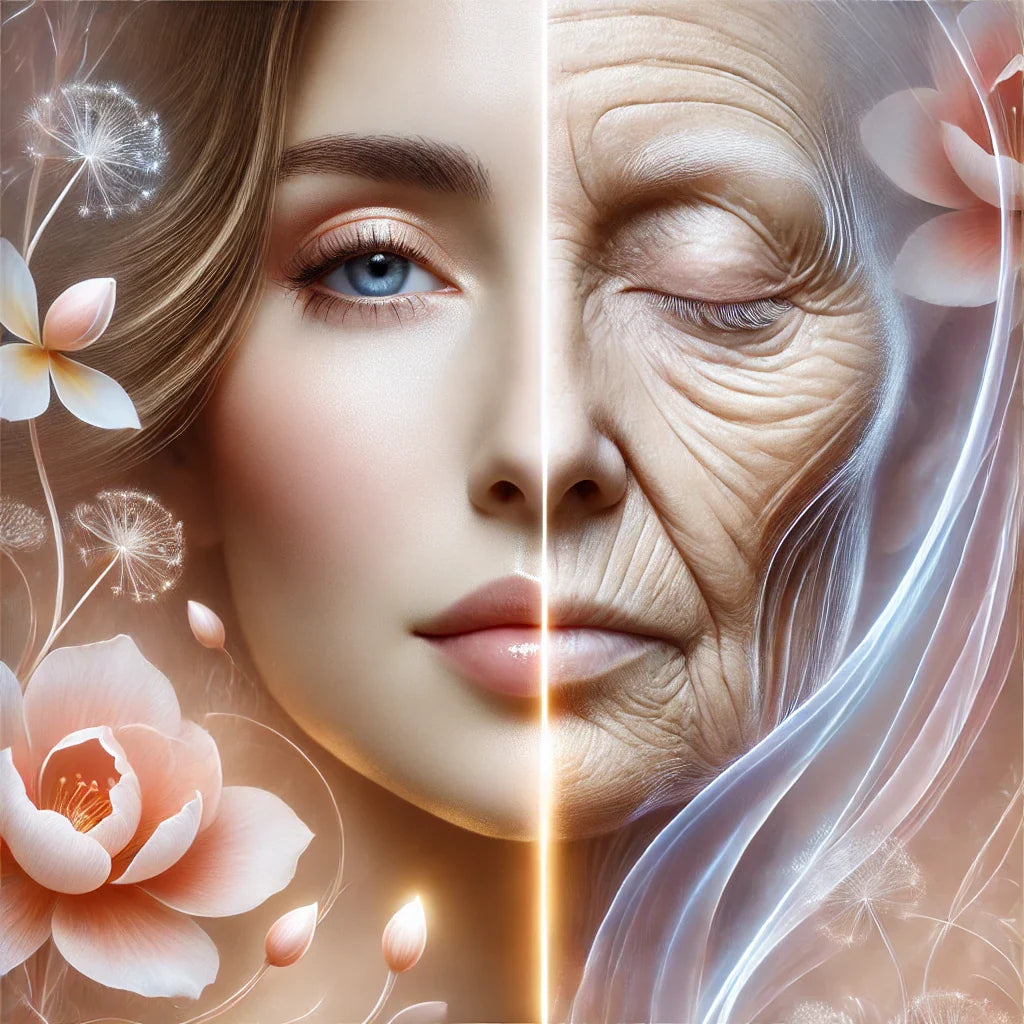
Why Do Wrinkles Form on the Skin?
Share
In the quest for youthful, radiant skin, understanding the underlying factors that contribute to wrinkles is crucial. Wrinkles are a natural part of the aging process, but they can also be influenced by various external and lifestyle factors.
This article aims to dissect the science behind wrinkles, exploring both the natural and external elements that lead to their formation. Additionally, we’ll delve into at-home and professional treatments that can mitigate the appearance of wrinkles, arming you with the information you need to make informed skin care choices.
The Science Behind Wrinkles
In order to understand what causes wrinkles, it’s important to understand the key players in your skin’s makeup.
Collagen and elastin are two proteins that serve as the backbone of your skin’s structure. They’re housed in the dermis, which is the second layer of skin sitting below the outer layer known as the epidermis. Collagen gives skin its strength and firmness, while elastin provides elasticity, enabling the skin to return to its original position after being stretched.
When the skin loses its collagen and elastin content, it begins to sag and form fine lines, eventually leading to deeper wrinkles. Furthermore, decreased collagen levels affect the connective tissue in the skin, exacerbating the problem by weakening the supportive matrix that keeps your skin firm.
What Causes Wrinkles?
So, why does collagen and elastin loss happen? It can be attributed to both internal factors like natural skin aging, hormonal imbalances and genetic predisposition, as well as external influences such as sun exposure and environmental pollution.
The natural aging process
The skin is a dynamic organ that continually renews itself. However, as you age, the rate at which skin cells turn over slows down significantly. Collagen production declines, and the existing collagen fibers weaken. Additionally, the elastin fibers lose their resilience, leading to decreased skin elasticity.
In your younger years, skin cell regeneration occurs approximately every 28 days, but this can extend to around 40-45 days in middle age.
When this process slows, older skin cells accumulate on the skin’s surface, leading to a dull and lackluster appearance. These older cells have a rougher texture, and their accumulation can exacerbate the appearance of wrinkles. Additionally, the slower regeneration rate impacts the connective tissue, contributing to the loss of firmness and the formation of fine lines and creases.
Sun exposure and UV rays
The role of sun exposure in skin aging cannot be overstated. When skin is exposed to the sun, it undergoes a process called photoaging, which is different from natural aging. During photoaging, the ultraviolet rays from the sun, particularly UVA and UVB rays, penetrate the skin and break down its collagen and elastin fibers. UVA rays are primarily responsible for premature skin aging, while UVB rays are the leading cause of sunburn and skin cancer.
This breakdown leads to skin becoming less resilient and more susceptible to wrinkling. That’s why dermatologists recommend using sunscreen that offers broad-spectrum protection against both UVA and UVB rays. The American Academy of Dermatology suggests using sunscreen with at least SPF 30 for effective sun protection.
Facial expressions
Facial expressions are an integral part of human interaction, but they also have a lasting impact on skin. Repetitive facial movements, such as smiling, frowning, and squinting, create ‘dynamic wrinkles.’ Over time, these repeated muscle contractions cause the skin to lose its ability to bounce back, leading to permanently etched facial wrinkles and lines, particularly around the eyes and forehead.
Alcohol and tobacco
Both alcohol and tobacco have detrimental effects on the skin. Alcohol dehydrates the body, including the skin, which is the body’s largest organ. This dehydration diminishes the skin’s ability to produce natural oils, leading to dry skin that is more prone to wrinkling. Additionally, alcohol can disrupt sleep patterns, and lack of restorative sleep can contribute to premature aging.
Tobacco smoke contains a myriad of harmful chemicals that not only damage collagen and elastin but also constrict blood vessels, reducing the flow of oxygen and nutrients to the skin. This can result in a sallow complexion and exacerbate the appearance of lines and wrinkles.
Environmental factors and free radicals
Free radicals are highly reactive molecules that are generated by various environmental factors, such as pollution, radiation, and even normal metabolic processes within the body. These unstable molecules wreak havoc on the skin by breaking down collagen and elastin fibers. Additionally, free radicals can inhibit the skin’s natural ability to repair itself, thereby accelerating the aging process.